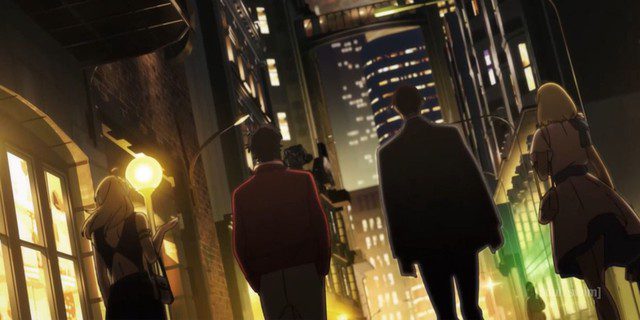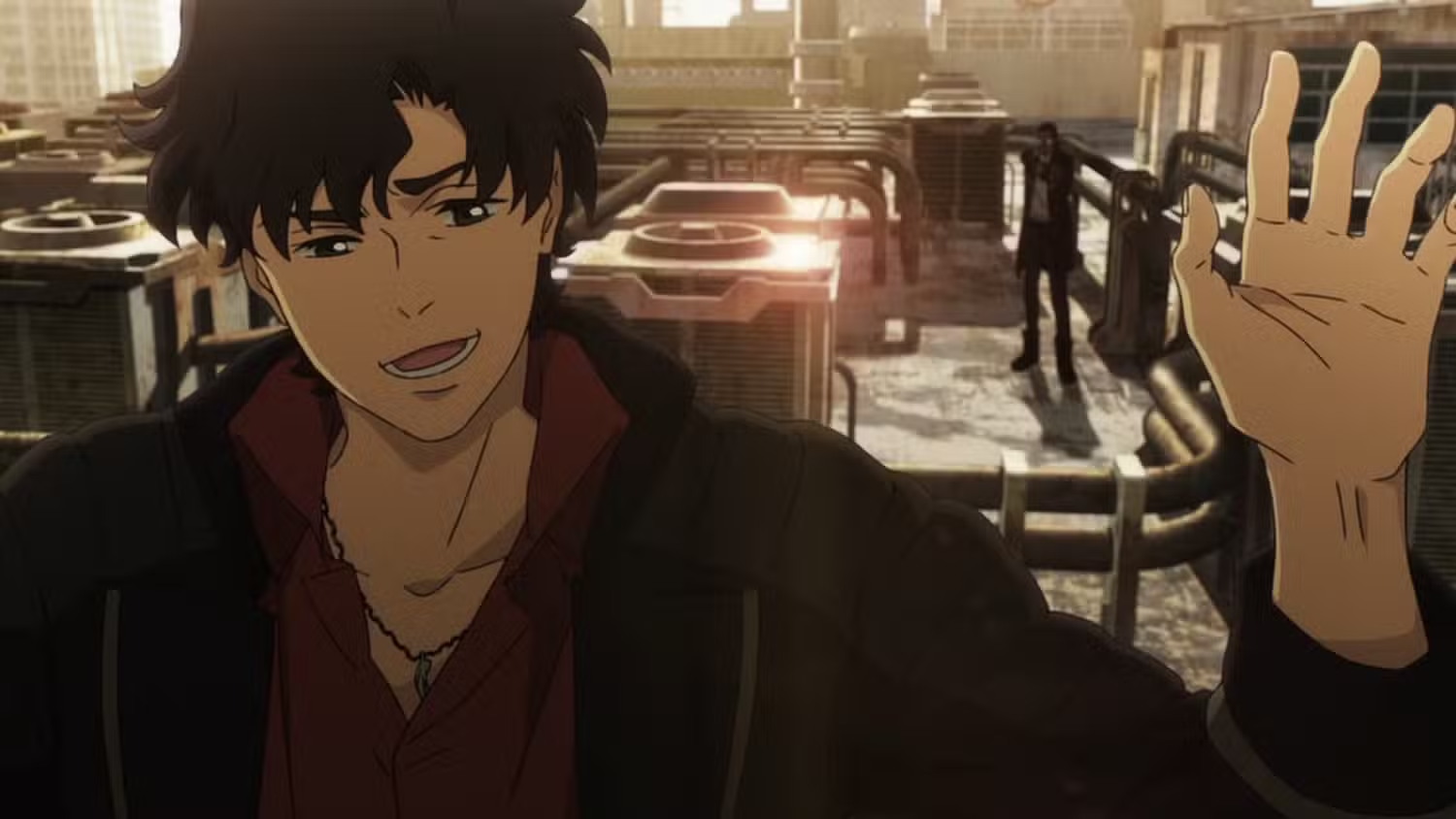In mid-2023, the announcement of Lazarus, a new anime from Toonami directed by Shinichiro Watanabe, the “father” of Cowboy Bebop, has generated significant anticipation among anime fans. With Watanabe at the helm and collaborating with John Wick director Chad Stahelski, Lazarus aims to be a major player in the anime release landscape. However, as the first episodes are set to premiere in April 2025, many viewers are already expressing concern about potential shortcomings, leading to a wave of skepticism in an anime industry that still struggles with differentiation.

The plot of Lazarus revolves around Axel Gilberto, a personal investigator tasked with finding the elusive scientist, Skinner. This scientist once caused chaos with his invention, Hapna—a non-addictive painkiller. However, three years later, the horrifying truth is revealed: Hapna is actually a narcotic that destroys the user’s brain after three years of use. With only 30 days left until the countdown begins and 13 short episodes, Lazarus must navigate a dangerous path to prevent a catastrophic outcome and confront the unknowns of the anime world.
Will the First Impressions of Lazarus Be “Underwhelming”?
From the outset, the fusion of Lazarus with some of the biggest names in anime and film has set high expectations for viewers. In its early episodes, this anime may evoke feelings of nostalgia through its resilient characters and intense action reminiscent of Cowboy Bebop, while also delivering combat scenes akin to those found in John Wick and captivating soundtracks similar to Samurai Champloo.
As the anime delves deeper into its storyline, Lazarus has faced challenges in effectively portraying its themes through direct dialogue. One of the most frequently cited criticisms is the ambiguity of the main characters and the world they inhabit when facing death. Many viewers merely attribute Axel and his counterpart’s actions as a “futile mission” in a dystopian setting.

Yet, the depth of the narratives that these critiques overlook is that the journey of Lazarus is not just about the struggle against inevitable fate, but also reflects the profound societal issues present today. The series serves as a commentary on the power dynamics within society, with a continuous theme embedded in the film that resonates deeply with real-world issues.
The setting of Lazarus takes place 30 years into a dark future, almost like a mirror reflecting the troubling aspects we currently witness in the real world. The skepticism surrounding science, healthcare, and politics shapes how the citizens of Lazarus receive news about their impending doom: a protest, a warning, but many choose to ignore the warnings of Skinner.
In episode 4 of Lazarus, viewers witness a wealthy elite, Skinner, who is entirely detached from the struggles of the common folk, leaving them to ponder, “Will anyone find a way to cure this?” This facet of the narrative does not stray far from reality, as it mirrors the very real scientific warnings about climate change, poverty, and the aftermath of the COVID-19 pandemic. By episode 9, the government openly admits to the ongoing “futile mission” while even the elite seem to grapple with the implications.
Why Lazarus Is Not Cowboy Bebop and Why That’s a Good Thing

The trend deviating from the “futile mission” of Lazarus is entirely justified upon reflection, as the Lazarus team is not merely a specialized group. It is more of a collective that has come together for various reasons beyond a singular goal. Each member of Lazarus carries their unique burdens, often clashing with their main objectives. The reality is that the stakes would be less authentic if the Russian diplomat Chris did not return as a shadow, or if Leland were not tied to the wealthy household he serves to help Axel through the political landscape.
If there is anything that Lazarus may be deemed inferior to, it would be the comparison to the success of Cowboy Bebop, which has twice the episode count. With 13 episodes compared to Cowboy Bebop‘s 26, Lazarus must provide ample time for viewers to connect with its characters and develop its narrative. The strongest point of Bebop is its ability to allow characters time to explore their own identities within the vastness of space and the open-ended nature of the storyline.
Conversely, Lazarus is faced with a countdown from the very first episode. Each episode concludes with a dark screen displaying “X days left…” in the bottom right corner, where “X” symbolizes the remaining days before the first character dies due to Hapna.
The blatant countdown lends a sense of urgency that viewers feel while watching the initial episodes of Lazarus. At the same time, the countdown also creates a distinct differentiation between Lazarus and other works of Watanabe. The unique camera angles and top-tier musical selections play a significant role in setting Lazarus apart from other iconic works of the director, and this only adds to the immediate comparison between Lazarus and Cowboy Bebop.
However, Lazarus has a storyline that diverges significantly from any of Watanabe’s famous films. The themes within Lazarus relate more closely to contemporary society than any themes in Cowboy Bebop or Samurai Champloo, and its narrative is more focused and can carry a unique meaning unlike any other film Watanabe has worked on.
Even before Lazarus was released, Shinichiro Watanabe expressed a desire for viewers to approach this new work with an entirely different perspective. He acknowledged that comparisons to Bebop are inevitable, but he also aimed to create a completely distinct series that stands on its own.
Considering that Watanabe has collaborated on Lazarus with long-time associate Keiko Nobumoto, who also served as a screenwriter for Cowboy Bebop, it is understandable that the series might evoke similarities. However, Watanabe has made it clear that “even with some overlapping themes, Lazarus remains Lazarus,” encouraging fans not to “overly compare” this new anime to its predecessors.
Lazarus Is Progressing Towards Its Final Stages

From the very first moments of Episode 1, Lazarus has made its main themes clear. The film explores the idea that every individual is too self-absorbed in their personal bubbles to pay attention to what is happening around them. Almost everyone is solely focused on personal success and immediate gratification, rather than considering external issues like climate change, poverty, or geopolitical conflicts.
Lazarus centers around how individuals fight to believe in anything amid the overwhelming reality of the present, only mentioning a doctor who speaks to the world about the impending doom that is set to unfold within 30 days. However, as the film prepares for a climax and the consequences of Hapna begin to surface, the warnings from Skinner become increasingly urgent, altering the narrative entirely.
In the previous three episodes, Lazarus quickly became a must-watch series with viewers eagerly awaiting each new release. Episodes 9, 10, and 11 contain significant revelations and thrilling battle sequences. The plot has developed considerably over the last three episodes, providing clarity on many of the early criticisms from viewers who were concerned about the portrayal of characters who seemed unprepared for their struggles.
Lazarus is not merely about survival; it also has compelling reasons to become one of the best anime of 2025. Its narrative of hidden mysteries is incredibly engaging, its action sequences rank among the most beautifully crafted in the genre, and its soundtrack is unmatched compared to any other anime in recent years. Combined with themes related to societal issues and human-centric narratives, Lazarus is poised to become a significant work that may garner serious critical acclaim.
According to CBR



















